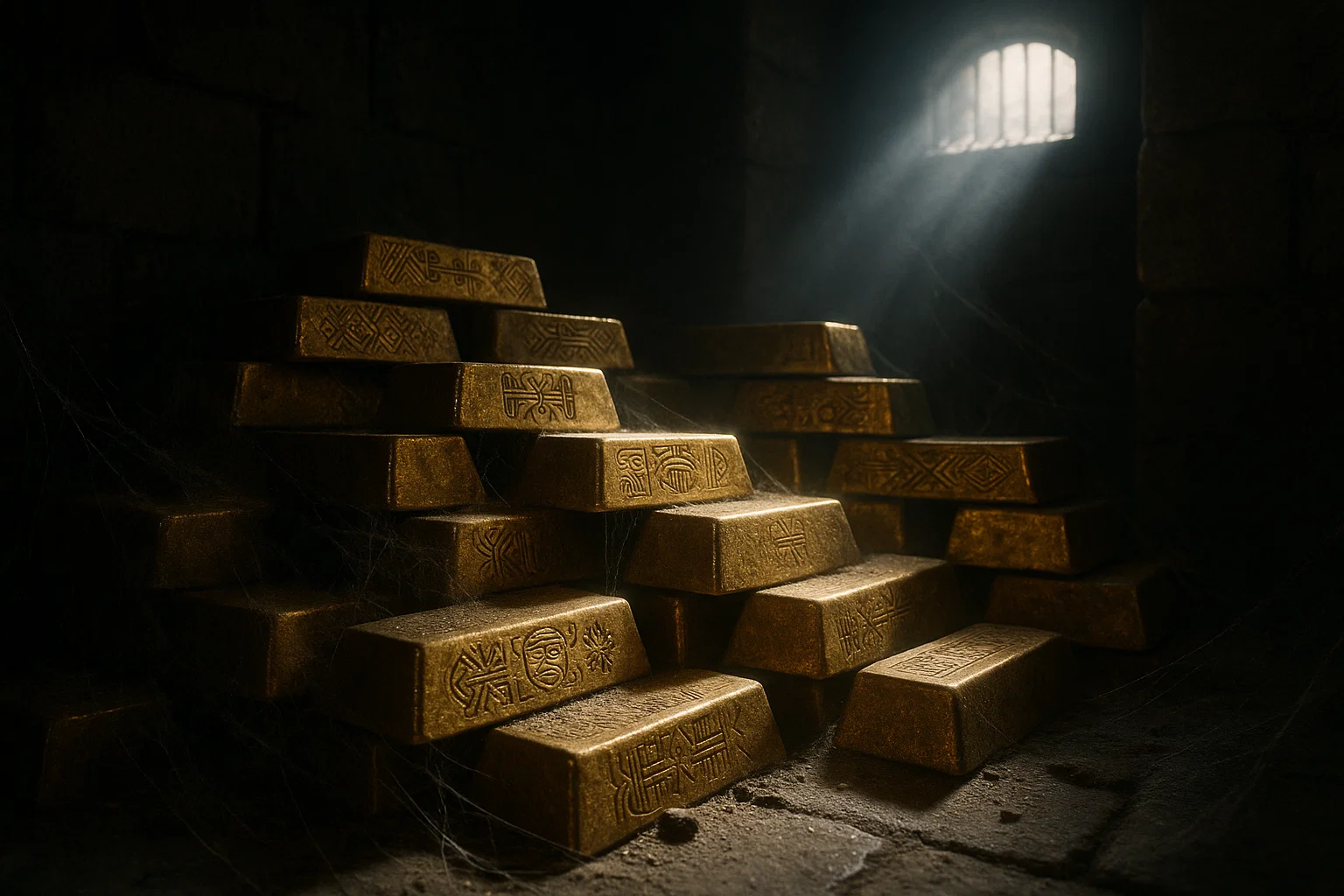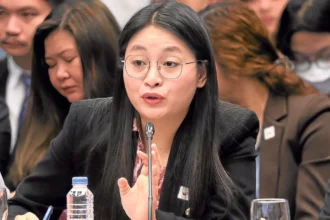Some stories refuse to die — they only grow bigger with every retelling. In the Philippines, no conspiracy has captured the imagination quite like the legend of the Tallano Gold and the supposed Maharlika Kingdom. It’s a tale that blends pre-colonial royalty, Spanish colonization, wartime intrigue, and the shadow of the Marcos dictatorship.
- 📜 The Origins of the Tallano Gold Legend
- 📈 Timeline of the Tallano Gold Myth
- 🕵️♂️ Marcos and the Gold Connection
- 💬 Voices from the Public
- 📲 How Social Media Brought It Back to Life
- 📚 Why Historians Remain Skeptical
- 🧠 The Psychology of Belief
- ❓ Frequently Asked Questions
- 🪙 The Allure of an Untouchable Fortune
For decades, whispers about a hidden fortune — thousands of tons of gold allegedly owned by the Tallano royal family — have circulated in backrooms, online forums, and now social media feeds. During the 2022 Philippine elections, the myth exploded into the mainstream, fueled by TikTok videos, Facebook posts, and even public statements hinting at a “golden” future under certain political figures.
But how did a story so incredible — and so unverifiable — become one of the country’s most persistent legends?
📜 The Origins of the Tallano Gold Legend
The Tallano family is said to have ruled a pre-colonial kingdom called Maharlika, spanning much of what is now the Philippines, parts of Malaysia, and even Borneo. According to the legend, they accumulated an unimaginable wealth of gold, some of which was allegedly entrusted to Ferdinand Marcos during his law practice in the 1960s for safekeeping.
Historians, however, are skeptical. No mainstream academic source has confirmed the existence of the Tallano family or Maharlika Kingdom in pre-colonial records. Yet, the lack of proof seems only to make the legend stronger among believers.
“History is written by the victors,” says one retired history professor. “If there was indeed a pre-colonial elite with massive wealth, the colonial powers had every reason to erase them from the official record.”
📈 Timeline of the Tallano Gold Myth
| Year/Period | Alleged Event |
|---|---|
| Pre-1500s | Tallano family rules Maharlika Kingdom, amassing gold wealth. |
| 1500s–1800s | Spanish colonization erases traces of Maharlika royalty. |
| 1930s–1940s | Gold allegedly hidden to avoid Japanese seizure during WWII. |
| 1960s | Tallano heirs allegedly entrust Marcos with thousands of tons of gold. |
| 1980s | Marcos ousted; rumors of hidden gold resurface. |
| 2000s | Conspiracy reemerges in fringe publications and internet forums. |
| 2022 | Viral resurgence during Philippine elections. |
🕵️♂️ Marcos and the Gold Connection
Central to the Tallano Gold story is the claim that Ferdinand Marcos became trustee of the gold before becoming president. Believers say this explains his alleged massive hidden wealth and why the Marcos family has always been dogged by corruption allegations.
In 2013, Imelda Marcos herself claimed in an interview that the family owned “plenty of gold,” though she framed it as a benevolent plan to help the Filipino people. Critics dismissed this as political theater, but for conspiracy theorists, it was proof.
💬 Voices from the Public
“My lolo swore he saw trucks full of gold in Ilocos during the 70s,” says a 56-year-old farmer from Batac. “We thought it was just for show, but now… maybe it was real.”
“I’ve been researching Tallano gold for 10 years,” says a Manila-based lawyer. “It’s difficult to separate fact from fiction, but the number of affidavits mentioning it is staggering.”
“The problem is people believe without evidence,” counters a young history teacher in Quezon City. “Legends are seductive, but they’re not the same as history.”
📲 How Social Media Brought It Back to Life
In the age of Facebook, TikTok, and YouTube, the Tallano Gold narrative found new life. Viral videos claimed the gold would be used to abolish taxes, pay off national debt, and make every Filipino rich.
🔥 Top 5 Social Media Claims About Tallano Gold
-
💰 Every Filipino will receive millions in cash once the gold is released.
-
🏦 Marcos family is keeping it safe for the people.
-
🌏 The gold can pay off the world’s debts, not just the Philippines’.
-
⚖️ International courts have recognized the Tallano claims.
-
📜 The gold proves the Philippines was never truly colonized.
None of these claims have credible evidence — but that hasn’t stopped them from racking up millions of views.
📚 Why Historians Remain Skeptical
| Reason for Skepticism | Explanation |
|---|---|
| No archaeological evidence | No physical proof of Maharlika artifacts or Tallano treasures. |
| Lack of archival records | Spanish and American colonial archives make no mention of Tallano royalty. |
| Implausible gold volume | Claims of “thousands of tons” exceed known global gold reserves. |
🧠 The Psychology of Belief
Why do so many people cling to a story with no solid proof? Experts point to collective yearning — the idea that a hidden fortune could change the country’s destiny. It’s a powerful thought in a nation struggling with poverty and inequality.
❓ Frequently Asked Questions
Is there any official record of the Tallano family?
No official historical or genealogical record confirms the existence of the Tallano family. The claims are based on anecdotal accounts, unsigned affidavits, and unverified documents. Historians consider it folklore rather than fact.
How much gold is allegedly involved?
Some versions of the legend claim 400,000 metric tons — an impossible figure considering all the gold ever mined in human history is estimated at just over 200,000 metric tons. This mathematical impossibility is one reason mainstream historians dismiss the tale.
Did Marcos really have control over the gold?
There is no legal or financial record proving Marcos was a trustee of Tallano gold. However, sworn statements from alleged witnesses exist, though their authenticity remains questionable and has never been verified in court.
Why did the Tallano Gold story resurface in 2022?
The legend went viral during the elections due to social media amplification and political campaigns leveraging it to create a narrative of wealth, prosperity, and nationalism.
Has any of the gold ever been seen publicly?
No verifiable photographs, assays, or official inventories of Tallano gold have been presented to the public. Any images circulating online are often stock photos or pictures of unrelated gold.
Could this be part of a disinformation campaign?
Many experts believe so. By weaving nationalism with incredible wealth, such narratives can influence public perception, voting behavior, and political loyalty.
Are there court cases about Tallano gold?
A few lawsuits have mentioned Tallano gold, but they are often dismissed for lack of evidence. None have resulted in a legal acknowledgment of its existence.
How does this compare to other treasure myths?
Similar to Yamashita’s Gold, it thrives on mystery, political intrigue, and the promise of sudden national transformation — but without concrete proof.
Why is the gold often linked to ending poverty?
It’s an appealing political message. In a country with deep economic struggles, the idea of instant wealth for every citizen is emotionally powerful, even without evidence.
Could it still be hidden somewhere in the Philippines?
While theoretically possible, the scale claimed in the legend makes it extremely unlikely. The logistics of hiding and securing that much gold for centuries without discovery strain credibility.
🪙 The Allure of an Untouchable Fortune
The Tallano Gold story isn’t just about wealth — it’s about hope, power, and national identity. For some, it’s proof of a glorious past erased by colonizers. For others, it’s a cautionary tale about political manipulation in the internet age.
Whether truth, half-truth, or outright fabrication, the legend endures because it taps into a deep, almost primal desire: the belief that salvation might lie buried in the ground, waiting to be claimed.
And until someone can definitively prove — or disprove — its existence, the Tallano Gold will remain the Philippines’ most glittering, most dangerous mirage.




